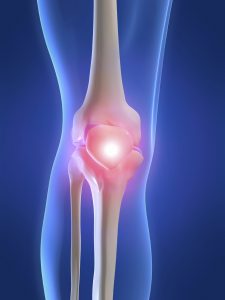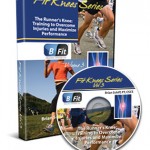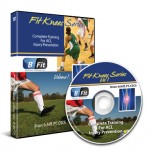Brian Schiff’s Blog
Injury Prevention, Sports Rehab & Performance Training Expert
Unfortunately, injuries cause more than pain and lost playing time for athletes. In many cases, an injury negatively impacts self-esteem and creates fear and anxiety. For competitive athletes, the injury often separates them from their familiar role and identity with respect to their teammates, coaches and peers.
It seems rather obvious that injured athletes would want to return to sport as soon as possible, right? Based on my clinical observations and experience, most athletes are motivated to return after their first injury. The more serious the injury (e.g. ACL tear, Achilles tendon rupture or UCL tear), the longer the road to get back. The speed and ease of the process is affected by the patient’s response to injury and surgery (coper vs. non-coper), degree of injury, skill of the surgeon, effectiveness of rehab, and patient compliance.
Much of the research done to date with fear of re-injury has centered on athletes undergoing ACL reconstruction. Over the last decade, methods for measuring kinesiophobia (fear of movement associated with sport/injury) such as the Tampa Scale of Kinesiophobia. I routinely use the TSK-11 with my athletes. In addition, the ACL-RSI is another tool for evaluating psychosocial readiness to return to sport. As sports medicine practitioners, we must pay attention to our clients’ fears and mental status.
Invariably, not all athletes want to return to sport. Factors that may hinder return to sport are:
- Chronic pain
- Fear of re-injury
- Fear or anxiety about long term pain, injury or future disability (such as osteoarthritis)
- Anxiety about not being able to return to their prior level of performance
As I write this update, I have now been back to work for a month. The first 3 days back were challenging, as I had not done that much with my arm in quite some time. I was sore by 5 pm each day, but no significant pain. The soreness resolved by the next morning. I quickly realized how weak I was as I attempted to stretch a client’s hamstring lifting the right leg up with my left arm.
With that said, going back to work also facilitated me moving the arm more frequently and using it against gravity. This has allowed me to regain more functional mobility and strength the past month. I have been careful to avoid any heavy or overhead lifting. I have not encountered something I could not do yet in patient care, but I have had to be aware of my body mechanics and positioning to reduce strain on the left arm.
MD follow-up
I saw the doctor this past Friday. He was pleased with my progress and encouraged me to keep working on regaining the last portion of my ROM. I will go back for one final appointment in 6 weeks. Of note, I had previously asked him to image the right shoulder to see if I had a tear since I have been having some right shoulder pain that has worsened since the left shoulder surgery. The MRI revealed a partial tear (30-40% of mostly bursal-sided fibers), some degeneration in the anterior labrum, biceps inflammation and a sizable bone spur. In essence, the doctor says I need to have the bone spur taken out in the near future to avoid a full tear on my right side. Not great news, but I am relieved it was not fully torn.
Rehab and Exercise
I am continuing to get stretched 2x/week, while doing my pulley and ROM exercises daily at home. I am performing scapular and rotator cuff strengthening about 3x/week. I returned to the gym for the first time on Labor Day. This was a humbling day to be sure as I cannot even do 50% of my previous weight with pull downs, rows and other lifts. But, Rome was not built in a day, and I know it will likely take up to a year to get back to 100% again.
As 2020 draws to a close and no holiday travel due to COVID, I found myself spending extra time scanning Twitter, IG and some various blogs related to training and rehab last week. I remember starting my blog many years ago prior to the birth of Twitter and IG (I am feeling old typing that lol). My purpose with this blog has always been to freely share information with clients, the general public and practitioners.
Now, more than ever, there is a plethora of opinions, videos, posts and methods on multiple platforms out there on the web. Many people seek clicks, followers, validation, attention, ad revenue or internet fame. It becomes easy to quickly go down a rabbit hole and become consumed with back and forth convos, online debates about the best exercise techniques/methodology, sales pitches for training programs, and in general what I deem to be excessive or over the top ‘look at me’ promotional posts by certain people. On one hand, the internet is a gift that gives us all a bigger platform and voice, including me. On the other hand, it can also muddy the water, create division among the ranks, and propagate consumer confusion as to what is best for him/her in rehab and training circles.
The spirit and purpose of this year-end blog post is one of a cautionary tale for consumers and young professionals. As someone more seasoned with 24 years of experience rehabbing and training clients, I feel it is important to step back and remember a few important things in this era of instant gratification and access to countless online videos, programs and opinions just a few clicks away.
Knee pain is prevalent among adolescents and active adults. Patellofemoral pain and osteoarthritis are the most likely causes of pain. It may be present with squatting, lunging, prolonged sitting, kneeling, running, jumping or twisting.

Research seems to support a combination of hip and knee strengthening as a primary line of defense and treatment for knee pain. Interestingly, males with PFP do not seem to have weakness in the gluteus medusa like their female counterparts. The link below is an abstract that speaks to this difference between the two groups:
https://www.ncbi.nlm.nih.gov/pubmed/30090674
Other modalities used to address anterior knee pain include patellar bracing/taping, blood flow restriction training, dry needling/acupuncture and soft tissue work seems to bring more questions accordion to some experts.
Click here to read the 2018 Consensus statement on exercise therapy and physical interventions (orthoses, taping and manual therapy) to treat patellofemoral pain from the 5th International Patellofemoral Pain Research Retreat.
Clinically, I have seen good results with the following:
1. Activity modification
2. Glute and quadriceps strengthening
3. Blood flow restriction (BFR) training
4. Sequential and progressive loading based on pain response
Today through the end of Memorial Day I am offering 50% off my entire product line of e-books and DVDs on my website. So if you or your friends and colleagues are looking for information on rotator cuff pain, frozen shoulder treatment, ACL prevention, or programs to eliminate knee pain in runners or those with osteoarthritis, now is the time to grab one of my guides.
Visit http://www.brianschiff.com/Products.asp to see my catalog of products and simply enter the code BFIT50 in the coupon box at checkout. The sale will end Monday at midnight.



